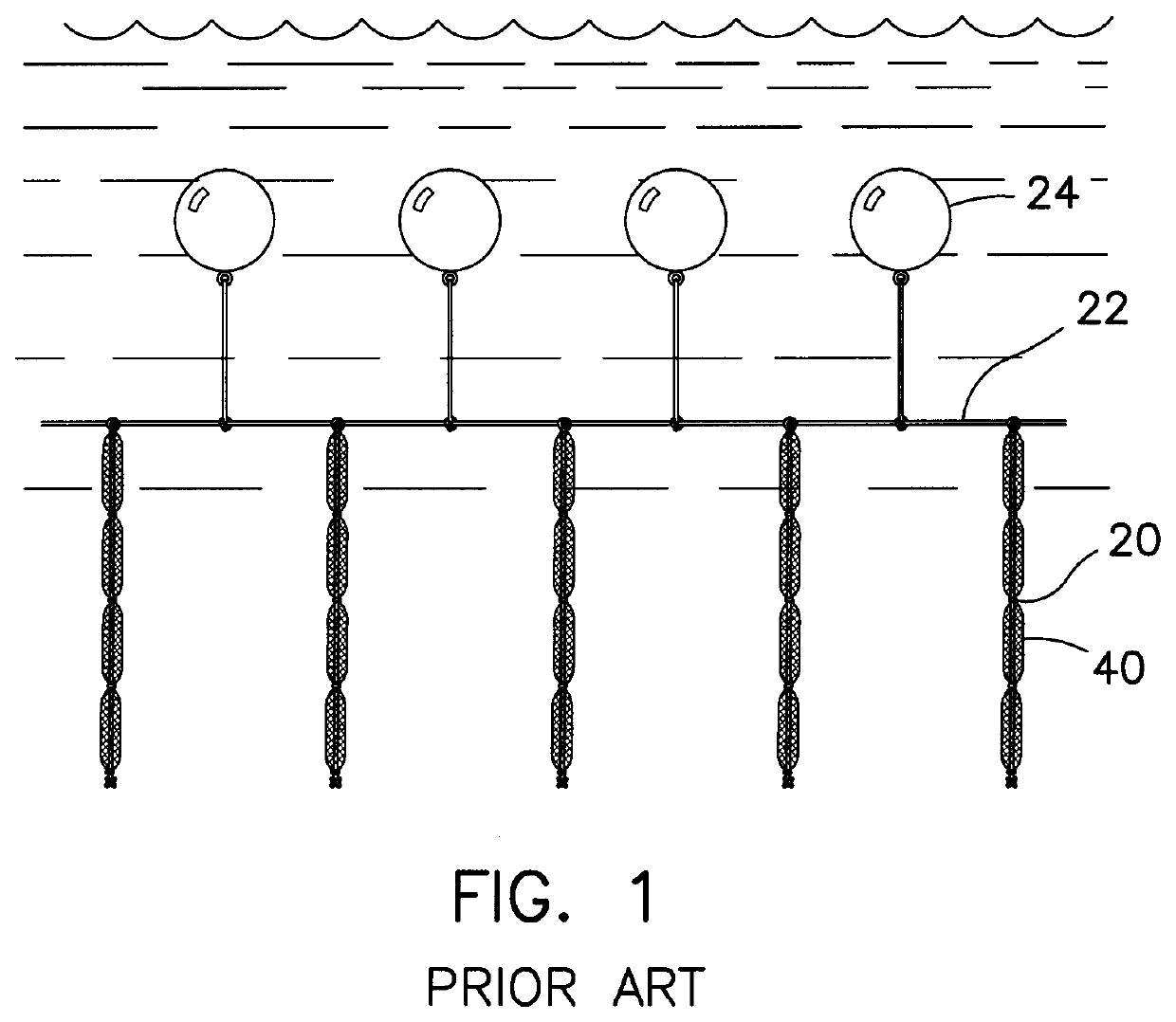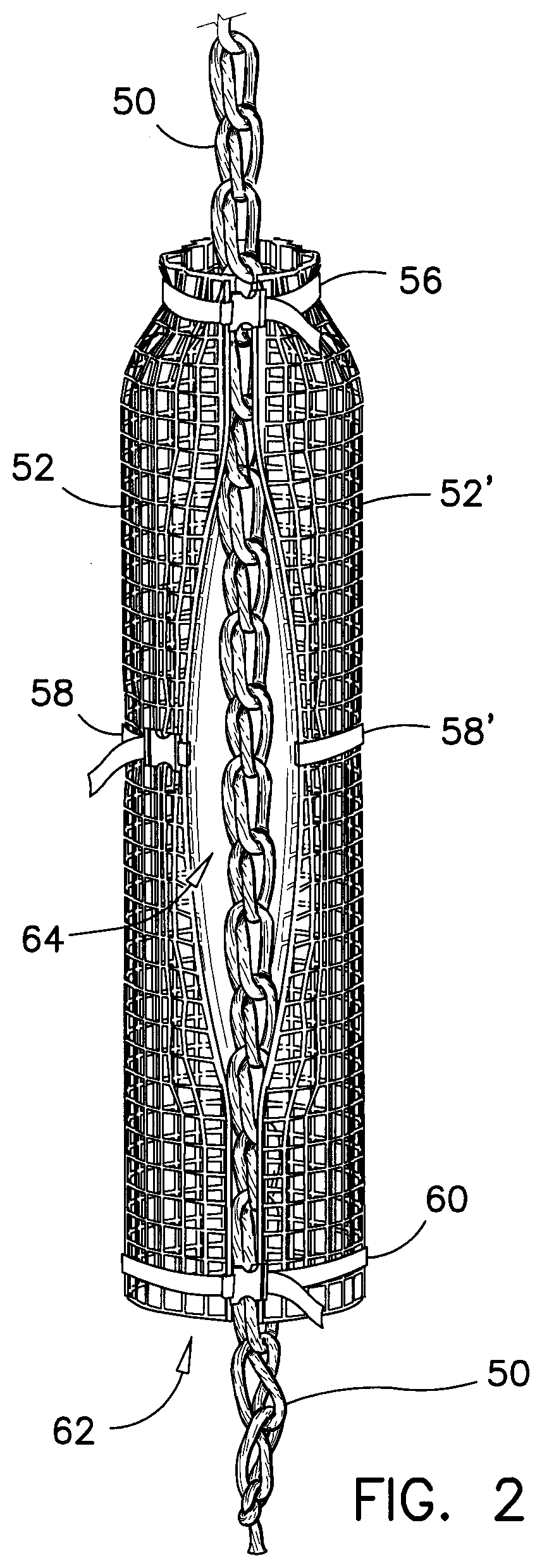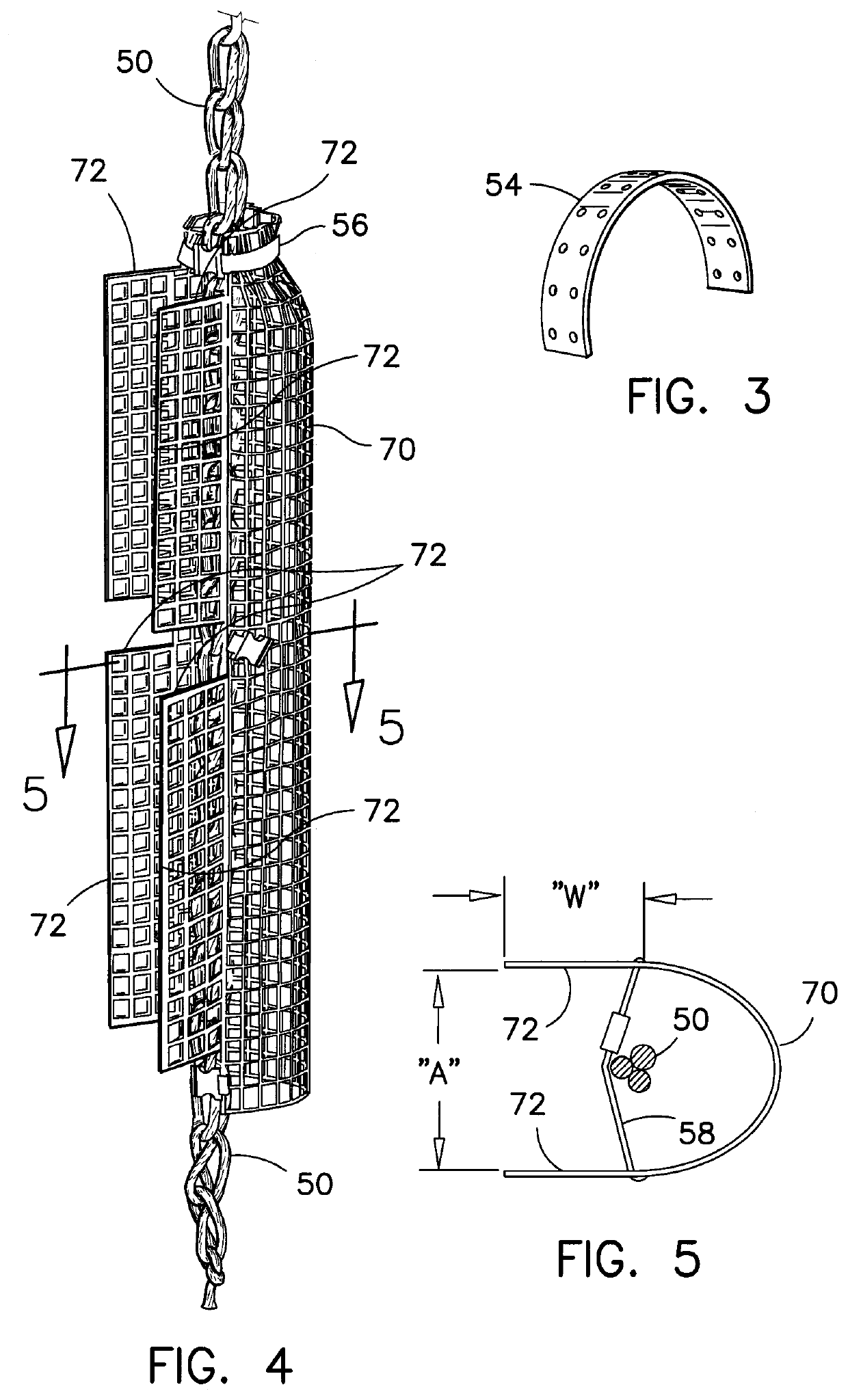Adjustable Natural Culling of Mussel Population on Mussel-Culture Popes
a technology of natural culling and mussel, which is applied in the field of aquaculture, can solve the problems of large losses in mussel culture, limited attachment surface area, and population density on the mussel collector undergoes a self-thinning process, so as to improve yield and reduce disposal of organic matter, the effect of reducing the number of ducks
- Summary
- Abstract
- Description
- Claims
- Application Information
AI Technical Summary
Benefits of technology
Problems solved by technology
Method used
Image
Examples
Embodiment Construction
[0053]While this invention is susceptible of embodiment in many different configurations, there are shown in the drawings and will be described in details herein, two specific embodiments of an installation for naturally culling population of mussels on mussel-culture ropes. The words “natural” and “naturally” as used herein, refer to phenomena of nature. The word “culling” is used in the industry to describe a process of removing the small and undergrown mussels from a rope, allowing more space for the large and healthy-looking ones to grow.
[0054]The embodiments presented herein should be considered as examples of the principles of the invention. The two specific embodiments are also presented to explain a method for naturally culling the population of mussels on mussel-culture ropes. This method is a further embodiment of the present invention. These examples are not intended to limit the invention to the embodiments illustrated and described.
[0055]Referring to FIG. 1, a typical m...
PUM
 Login to View More
Login to View More Abstract
Description
Claims
Application Information
 Login to View More
Login to View More - R&D
- Intellectual Property
- Life Sciences
- Materials
- Tech Scout
- Unparalleled Data Quality
- Higher Quality Content
- 60% Fewer Hallucinations
Browse by: Latest US Patents, China's latest patents, Technical Efficacy Thesaurus, Application Domain, Technology Topic, Popular Technical Reports.
© 2025 PatSnap. All rights reserved.Legal|Privacy policy|Modern Slavery Act Transparency Statement|Sitemap|About US| Contact US: help@patsnap.com



